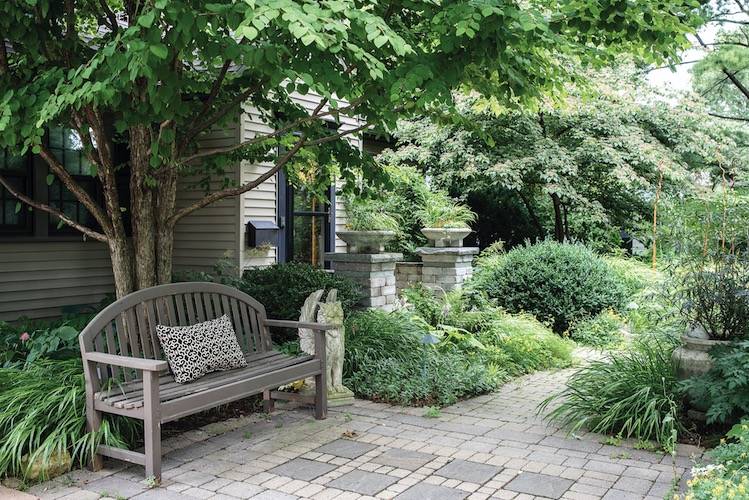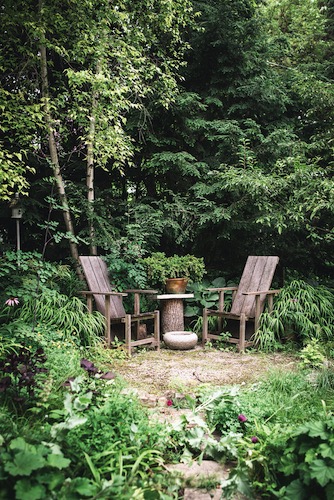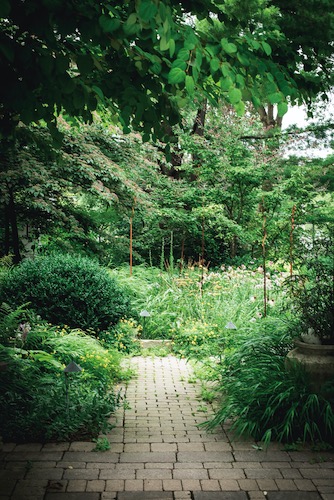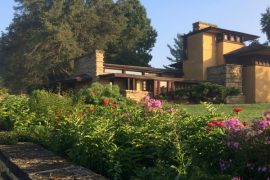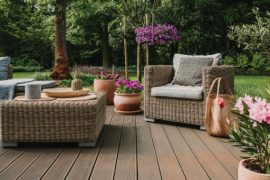By Shelby Rowe Moyer | Photography by Sunny Frantz
Madison resident Jeff Epping didn’t want to spend his summer weekends mowing and weeding, so he endeavored to create an outdoor respite that could be enjoyed without all the fuss.
Being that Epping is the director of horticulture at Olbrich Botanical Gardens, he knew exactly how to design it for his needs and the needs for area wildlife.
The front and back yard are packed with native plants that support insects, butterflies and birds — an element of gardening that’s important to Epping’s career as a horticulturist. In fact, entomologist and professor Doug Tallamy’s book, “Natures Best Hope,” has become Epping’s bible, of sorts, on how gardens can help support fauna endangered by urban sprawl.
“Whether it be trees or shrubs or perennials or annuals, I really think about how they might support the food web which is essential for all wildlife,” he says.
One gardening system Epping created in his front yard is a super low maintenance gravel garden. He uses a thick layer of gravel in his garden beds and clusters drought-tolerant plants tightly together to create a more natural plant community. The tight spacing and gravel prevent weeds from sprouting. He cuts back the top growth in spring after overwintering insects come to life and leaves it be the rest of the year.
Colorful flowers and ornamental varieties keep the garden interesting during the growing season, while the trees, shrubs, and ornamental grasses maintain its beauty in the fall and winter.


